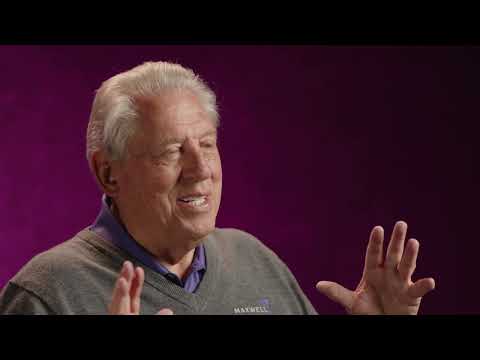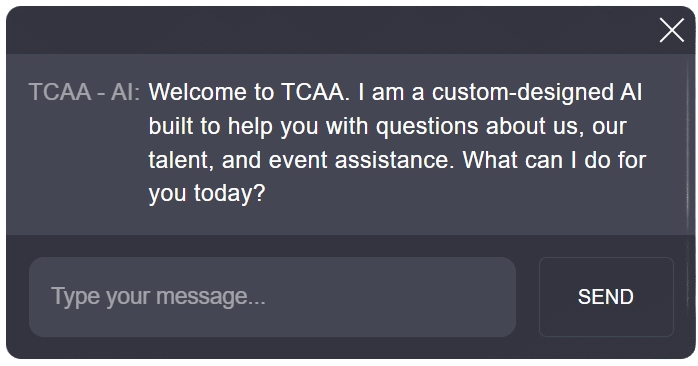In today’s fast-paced world, resilience in leadership shines as a powerful trait. It’s about more than just bouncing back from setbacks; it’s about steering through turbulent waters with confidence and grace. Leaders who embrace resilience can transform challenges into growth opportunities. They inspire their teams to march forward, even when the path isn’t clear. This article dives deep into resilience in leadership, exploring its vital role in driving change and offering real examples of organizations that have mastered this art.

The Seven Pillars of Resilience in Leadership
Resilient leaders possess distinct traits that empower them to weather storms and thrive in adversity. Let’s break down the seven key pillars that define resilience in leadership:
A leader’s ability to connect emotionally is critical. High emotional intelligence helps leaders understand team dynamics and respond to challenges with empathy. Take Satya Nadella, the CEO of Microsoft, for instance. He spearheaded a cultural transformation that emphasized empathy, leading to improved employee engagement and innovative solutions.
In a world that’s constantly changing, adaptability is the name of the game. Resilient leaders pivot their strategies when necessary, encouraging a culture of innovation. Look at Brian Chesky, co-founder of Airbnb. During the COVID-19 pandemic, he swiftly shifted the company’s focus to local stays, showcasing incredible flexibility in a crisis.
Resilient leaders possess a clear vision for the future. They inspire their teams to rally around common goals. Elon Musk’s work with Tesla is a prime example; his commitment to advancing sustainable energy has not only reshaped the auto industry but has ignited a global movement toward renewable energy.
When the pressure mounts, the ability to make timely decisions is vital. Indra Nooyi, former CEO of PepsiCo, exemplified decisive action by acquiring healthier food brands, aligning the company with changing consumer preferences and setting a path for sustainable growth.
Resilience blooms in a collaborative environment. Leaders who build trust and facilitate open communication create strong, resilient teams. Howard Schultz, former Starbucks CEO, emphasized employee welfare, fostering a culture that helped the company endure economic challenges while continuing to grow.
Resilient leaders see challenges as lessons waiting to be learned. Recognizing failure as part of the growth process is key. Jeff Bezos from Amazon is an excellent example; he promotes a “failure culture” where teams learn from setbacks, driving ongoing improvement and success.
Great leadership also hinges on personal health. Leaders like Arianna Huffington champion mindfulness and work-life balance, setting positive examples for their teams and reinforcing the idea that self-care is a pillar of resilience.

The Impact of Resilience in Leadership on Organizational Change
The impact of resilience in leadership is profound and far-reaching. Effective leaders inspire teams to view change not just as something to endure but as an opportunity to embrace. Organizations led by resilient leaders often enjoy higher employee morale and a stronger adaptability rate.
Case Study: The Transformation at IBM
A powerful illustration of resilience in leadership can be seen in IBM’s transformation under Arvind Krishna. He recognized the necessity for IBM to pivot toward cloud computing and artificial intelligence. By cultivating a culture of innovation and prioritizing employee skill development, Krishna smoothly guided the company through significant changes. This proactive approach not only improved IBM’s market position but also reaffirmed its relevance in a rapidly shifting industry landscape.

Strategies for Developing Resilience in Future Leaders
Developing resilience in future leaders requires intentional strategies. Here are practical approaches organizations can implement:

Embracing the Future
As we forge ahead into an unpredictable future, the role of resilience in leadership becomes more critical. Leaders ready to harness their resilience navigate shifts with ease, leveraging their teams’ collective strengths. Organizations that invest in developing resilient leaders stand poised for success. They unlock the potential change holds, creating dynamic environments where innovation can thrive.
Cultivating resilience ensures leaders don’t just survive the challenges ahead; they emerge stronger, setting a course for a more adaptable future. The journey of leadership is paved not only with challenges but also with the promise of growth. Thus, let’s celebrate those who embody resilience, much like historical figures such as Abraham Lincoln, Mahatma Gandhi, and Nelson Mandela, who faced adversity head-on and transformed their surroundings.
In conclusion, resilient leadership is a lifeline in a world marked by constant change. Resilience in leadership isn’t just a skill; it’s an essential ingredient for thriving in today’s fast-moving landscape. Whether you’re a potential speaker looking to share your insights or an organization seeking top talent for your events, remember that resilience is more than a buzzword—it’s a pathway to greatness.
For engaging insights from professionals in emotional intelligence and brand activation, check out our specialized speaker programs at TCAA. Together, let’s embrace the power of resilience!

Resilience in Leadership: Unlocking Potential in Change
The Power of Adaptation in Leadership
Resilience in leadership is like a sturdy anchor amidst a raging storm. Leaders who embrace change and adapt grow stronger and more effective over time. Interestingly, research shows that more than 40% of successful leaders often turn to emotional intelligence Speakers to develop their skills. They understand that connecting with their teams emotionally is crucial, especially during time-consuming projects or transitions. Just like the creativity seen in Jojo Bows, which have taken the fashion world by storm, resilient leaders often incorporate creative strategies into their change management.
Embracing change isn’t just about grit; it’s also about engaging with your team. A digital engagement strategy can help leaders foster communication and collaboration among their teams. In these fast-paced environments, adopting new technologies can feel imperfect, but smart leaders know it’s an investment. Equally crucial is the ability to maintain humor. For instance, the comedic genius of Robert Kline can be a fun reminder that laughter can lighten the atmosphere during tough times. A little levity can go a long way in showcasing resilience in leadership.
Finding Strength Through Adversity
Another fascinating tidbit about resilience in leadership is the role of mental health. Leaders are often under immense pressure, making awareness of issues like PTSD paramount. By promoting mental health resources, such as Ptsd radio, leaders foster a culture of support, encouraging their teams to speak up and seek help when needed. A resilient leader not only leads with strength but also models vulnerability. Relationships built on trust enhance a team’s ability to weather any storm, much like the unwavering support from a loyal friend.
Looking at history, figures such as Frances Quinn hunter illustrate how resilience can lead to unprecedented change. Their leadership demonstrates the power of tenacity and a willingness to embrace new ideas. Furthermore, brand activation Speakers often emphasize that incorporating brand values during times of change helps organizations maintain their identity, showing that true resilience in leadership lies in adapting without losing sight of what matters most. In these ways, resilient leaders equip their teams with the tools to face and power through change, creating a cycle of strength and determination.

What are the 4 core areas of resilient leadership?
The four core areas of resilient leadership are physical, mental, emotional, and social. Leaders focus on all these aspects to create a well-rounded approach to resilience, enabling them to adapt to change and guide their teams effectively.
How do you build resilience as a leader?
To build resilience as a leader, it’s essential to embrace change, nurture a positive mindset, and cultivate strong connections with your team. Practicing self-care, staying calm under pressure, and learning from setbacks also play a big role in enhancing your resilience.
What are the 5 C’s of resilience?
The 5 C’s of resilience include confidence/control, connections, commitment, calmness, and care for self. These elements work together to help leaders cope with challenges while maintaining their well-being and effectiveness.
What is an example of resilient leadership?
A classic example of resilient leadership can be seen in figures like Nelson Mandela, who faced extreme adversity but remained steadfast and focused, turning challenges into opportunities for change and growth in society.
What are the 7 crucial C’s of resilience?
The 7 crucial C’s of resilience typically include confidence, connection, character, competence, coping, contribution, and commitment. Each of these aspects contributes to an individual’s ability to handle challenges and bounce back from difficulties.
What are the 3 C’s of resilience?
The 3 C’s of resilience consist of confidence, connection, and commitment. These are vital ingredients that enable leaders to face tough situations with a sense of purpose and support from others.
What does a resilient manager look like?
A resilient manager is someone who stays composed under pressure, encourages open communication, and demonstrates empathy. They adapt to challenges without resorting to harmful behaviors and inspire their team to overcome obstacles.
How to develop resilience as a manager?
To develop resilience as a manager, focus on self-awareness, maintain a positive outlook, and build strong relationships with your team. Regularly seeking feedback and being open to learning from experiences also fosters resilience.
What are the principles of resilient leadership?
The principles of resilient leadership include cultivating adaptability, maintaining a long-term view, nurturing relationships, and exemplifying a growth mindset. Leaders who follow these principles can navigate change more effectively.
What are the 4 Ps of resilience?
The four Ps of resilience are perspective, purpose, perseverance, and positivity. These elements help individuals find meaning and strength during tough times, allowing them to thrive.
What are the 3 P’s of resilience?
The 3 P’s of resilience refer to purpose, personalization, and permanence. These aspects encourage individuals to understand the reasons behind challenges, take ownership, and realize that tough times don’t last forever.
What are the 4 R’s of resilience?
The 4 R’s of resilience are recognition, regulation, resilience-building, and recovery. These components guide leaders in managing their emotions and fostering a supportive environment for themselves and their teams.
How to build resilience as a leader?
To build resilience as a leader, regularly reflect on experiences, seek support from others, and practice proactive problem-solving. Emphasis on continuous learning can strengthen your resilience.
What is the resilience model of leadership?
The resilience model of leadership focuses on adaptability, emotional intelligence, and strategic thinking. Successful leaders integrate these qualities to thrive in unpredictable environments.
What are the four elements in resilient leadership?
The four elements in resilient leadership include adaptability to change, ability to maintain focus on goals, skill in building positive relationships, and strength in self-care. These elements foster effective leadership through challenges.
What are the 4 C’s of resilience?
The 4 C’s of resilience are confidence, connections, competence, and coping. Each of these elements is crucial for leaders as they work to navigate change and manage stress effectively.
What are the 4 pillars of resilience?
The 4 pillars of resilience encompass physical health, mental sharpness, emotional stability, and solid social connections. Together, they support a leader’s ability to withstand pressures and challenges.
What are the 4 areas of resilience?
The four areas of resilience align with physical, mental, emotional, and social aspects. Leaders should work on developing each area to create a comprehensive approach to resilience in their leadership style.
What are the 4 Ps of resilience?
The 4 Ps of resilience emphasize perspective, purpose, positivity, and patience. These points offer a framework for leaders to remain grounded and proactive during challenging circumstances.


















